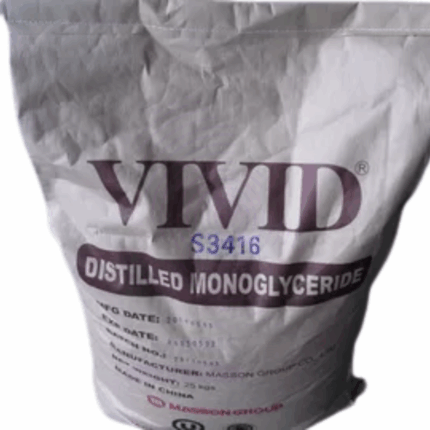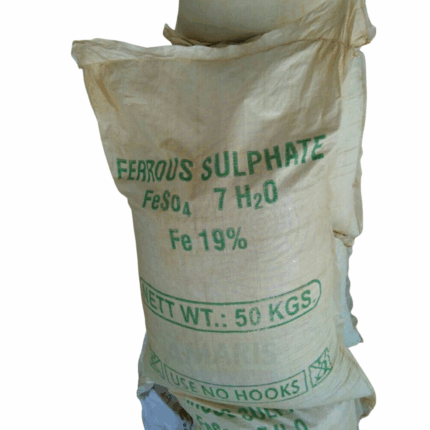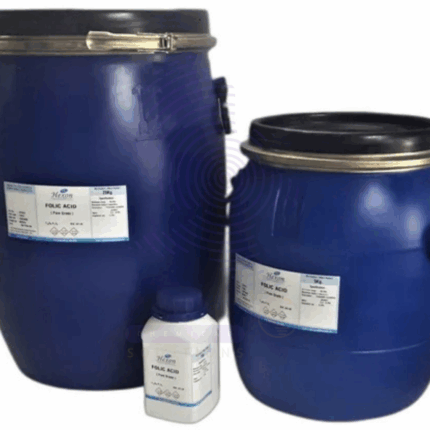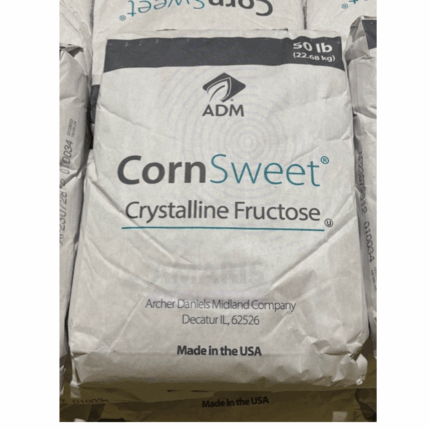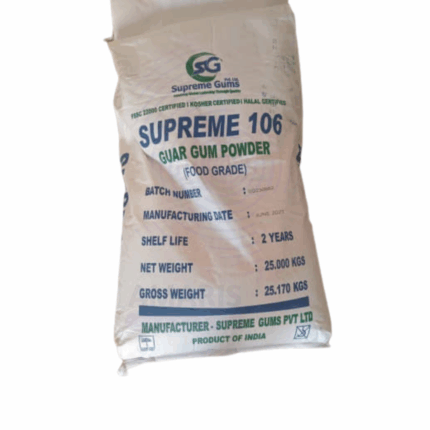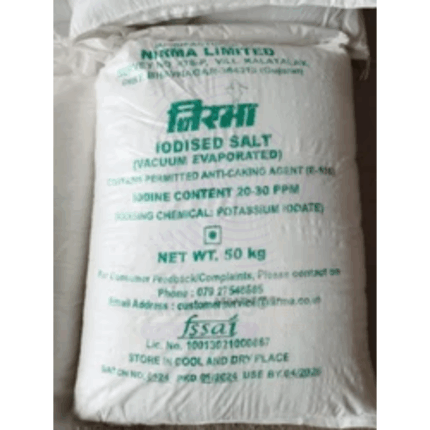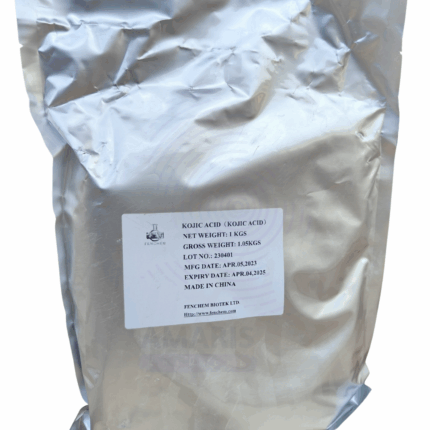Ferrous Gluconate
Whatsapp Order
Ferrous Gluconate is an iron salt of gluconic acid, appearing as a pale greenish-blue or green crystalline powder or granules. It is widely used as a nutritional iron supplement and food additive due to its good bioavailability and relatively low toxicity compared to other iron salts. Ferrous Gluconate is water-soluble, providing a stable source of ferrous iron (Fe²⁺) that is easily absorbed in the gastrointestinal tract. This compound is commonly employed in pharmaceuticals, food fortification, and medical formulations to treat or prevent iron deficiency anemia. It is also used as a reducing agent and color stabilizer in various industrial applications.
Description
Table of Contents
Toggle
Ferrous Gluconate
Primary Uses
- Pharmaceuticals and Nutritional Supplements
- Used as an iron supplement to treat and prevent iron deficiency anemia.
- Formulated into tablets, capsules, syrups, and fortified foods due to good gastrointestinal tolerance.
- Preferred in pediatric formulations for improved palatability and reduced gastrointestinal irritation.
- Food Industry
- Employed as a fortifying agent to enrich foods with bioavailable iron.
- Commonly added to cereals, flour, bakery products, and beverages.
- Acts as a color stabilizer and reducing agent to maintain product appearance.
- Medical and Health Applications
- Used in intravenous iron therapy and oral iron formulations.
- Sometimes applied in wound care formulations for its mild antimicrobial properties and to promote healing.
- Industrial Uses
- Utilized as a reducing agent in photographic developers and certain chemical syntheses.
- Employed in dyeing and printing industries to enhance color fixation.
Secondary Uses
- Cosmetics
- Occasionally used as a colorant or active ingredient in cosmetic formulations to improve skin appearance.
- Veterinary Medicine
- Used as an iron supplement in animal feed and veterinary medicinal products.
- Water Treatment
- Acts as a mild reducing agent in water treatment to remove dissolved oxygen or heavy metals.
PRODUCT KEY FEATURES
- Basic Identification Attributes
- Chemical Name (IUPAC): Ferrous gluconate
- Common/Trade Name: Ferrous Gluconate
- CAS Number: 299-28-5
- HS Code: 2833.29.00
- Molecular Formula: C₁₂H₂₂FeO₁₄
- Synonyms: Iron(II) gluconate, Iron D-gluconate, Ferrous D-gluconate
- Physical & Chemical Properties
- Physical State: Pale greenish-blue crystalline powder or granules
- Odor: Odorless or slight acidic smell
- Solubility: Soluble in water (approximately 1 g/2 mL at 20°C), insoluble in alcohol
- Melting Point: Decomposes before melting (~200°C)
- pH (aqueous solution): Slightly acidic (pH ~3–5)
- Stability: Stable under normal conditions; sensitive to oxidation forming ferric compounds on exposure to air and moisture
- Safety & Hazard Attributes
- Hazard Class (GHS): Not classified as hazardous under normal use; may cause mild irritation on contact
- Toxicity: Low acute toxicity; excessive intake can cause iron toxicity
- Exposure Limits: No specific occupational exposure limits established
- Storage & Handling Attributes
- Storage Conditions: Store in a cool, dry, well-ventilated area away from oxidizing agents and moisture
- Container Type: Sealed plastic or glass containers, moisture-proof packaging
- Shelf Life: 2–3 years if stored properly
- Handling Precautions: Avoid dust formation and inhalation; minimize exposure to air to prevent oxidation
- Regulatory & Compliance Attributes
- FDA Status: Approved for use as a food additive and nutritional supplement
- REACH Registration: Registered under EU chemical regulations
- Food Additive Code: E579 (iron gluconate) in Europe
- Usage Restrictions: Maximum allowed concentrations regulated in food and pharmaceuticals
- Environmental & Health Impact
- Biodegradability: Organic iron salt; biodegradable in the environment
- Ecotoxicity: Low toxicity to aquatic organisms at normal usage levels
- Bioaccumulation: Not expected to bioaccumulate
Carcinogenicity/Mutagenicity: Not classified as carcinogenic or mutagenic
SAFETY HANDLING PRECAUTIONS
Safety Handling Precautions
- Personal Protective Equipment (PPE):
- Gloves (nitrile or latex recommended)
- Safety goggles
- Lab coat or protective clothing
- Dust mask if handling large quantities or in dusty environments
- Handling Guidelines:
- Use in well-ventilated areas or under local exhaust ventilation
- Avoid inhalation of dust and contact with eyes and skin
- Prevent dust accumulation and spills
- Storage Measures:
- Keep containers tightly sealed
- Store away from oxidizing agents and moisture
- Protect from direct sunlight and heat sources
- Hygiene Practices:
- Wash hands thoroughly after handling
- Do not eat, drink, or smoke while handling the product
- Clean surfaces and equipment after use
First Aid Measures
- Inhalation:
- Move the affected person to fresh air
- Seek medical attention if respiratory irritation or distress occurs
- Skin Contact:
- Wash affected area with soap and water
- Remove contaminated clothing
- Consult a physician if irritation develops or persists
- Eye Contact:
- Rinse eyes immediately with plenty of water for at least 15 minutes
- Seek medical attention if irritation persists
- Ingestion:
- Rinse mouth with water
- Do not induce vomiting unless instructed by medical personnel
- Seek immediate medical advice in case of large ingestion
Firefighting Measures
- Fire Hazards:
- Non-flammable; however, may decompose under fire conditions producing toxic fumes
- Extinguishing Media:
- Use water spray, foam, dry chemical, or carbon dioxide (CO₂) as appropriate
- Special Precautions:
- Firefighters should wear protective gear and self-contained breathing apparatus if exposed to fumes
- Decomposition Products:
- May emit carbon oxides, iron oxides, and other toxic gases under fire conditions
Related products
Distilled Monoglycerides Remosoft
Distilled Monoglycerides Remosoft are purified monoglycerides derived from the glycerolysis of edible fats and oils, followed by a distillation process that removes impurities and enhances purity. They are colorless to pale yellow, odorless, and possess excellent emulsifying properties. DMG is widely used in food, pharmaceutical, and cosmetic industries due to its surface-active properties, ability to stabilize emulsions, and function as an anti-caking and lubricating agent. The distilled grade ensures high purity and low free fatty acid content, making it suitable for sensitive applications.
Ferrous Sulphate Dried 150 Mesh
Ferrous Sulphate Dried 150 Mesh is a finely ground, dried form of ferrous sulfate (iron(II) sulfate) with a particle size passing through a 150 mesh sieve. It appears as pale green to light green crystalline granules or powder. This iron salt is widely used as a nutritional supplement, industrial chemical, and water treatment agent due to its high iron content (typically around 32-33% Fe) and enhanced solubility compared to the hydrated forms. The dried form improves stability and shelf life by reducing moisture content, making it suitable for applications in agriculture, pharmaceuticals, food fortification, and environmental treatment processes.
Fish Collagen
Fish Collagen is a natural protein derived from the skin, scales, and bones of various fish species through enzymatic hydrolysis or acid extraction. It is predominantly Type I collagen, known for its excellent bioavailability and biocompatibility. Fish Collagen typically appears as a fine white to off-white powder with low odor and high solubility in water and acidic solutions. It is widely prized in cosmetics, nutraceuticals, pharmaceuticals, and food industries due to its superior absorption compared to mammalian collagen, making it highly effective in skin, joint, and bone health applications. Fish Collagen supports the body’s extracellular matrix, promoting skin elasticity, hydration, and tissue repair.
Folic Acid
Folic Acid, also known as Vitamin B9 or pteroylmonoglutamic acid, is a water-soluble vitamin essential for numerous physiological processes including DNA synthesis, repair, and methylation, as well as amino acid metabolism. It appears as a yellow to orange-yellow crystalline powder, odorless or with a faint characteristic odor. Folic Acid is vital for cell division and growth, making it critical during pregnancy and periods of rapid growth. It is widely used in the pharmaceutical, nutraceutical, food fortification, and cosmetic industries due to its role in preventing folate deficiency anemia, neural tube defects in newborns, and supporting overall cellular health.
Fructose
Fructose, also known as fruit sugar, is a naturally occurring monosaccharide found in many plants, fruits, honey, and root vegetables. It is a simple sugar with a sweet taste and is one of the three dietary monosaccharides, alongside glucose and galactose. Fructose appears as a white crystalline powder, highly soluble in water, and is commonly used as a sweetener in food and beverage industries due to its high relative sweetness. It plays important roles in metabolism and is used extensively in the production of high-fructose corn syrup (HFCS) and other sweetening agents.
Guar Gum
Guar Gum is a natural polysaccharide extracted from the endosperm of the guar bean (Cyamopsis tetragonoloba). It appears as an off-white to cream-colored powder with a neutral odor and bland taste. Guar Gum is a galactomannan composed mainly of mannose and galactose units, known for its excellent water-binding, thickening, and stabilizing properties. It forms highly viscous solutions even at low concentrations, making it a versatile hydrocolloid used widely across food, pharmaceutical, cosmetic, oilfield, and industrial applications.
Iodised Salt
Iodised Salt is table salt (sodium chloride) fortified with a small, controlled amount of iodine, typically in the form of potassium iodate or potassium iodide. It appears as fine white crystalline granules, odorless, and with a characteristic salty taste. The addition of iodine helps prevent iodine deficiency disorders (IDD) such as goiter, mental impairment, and developmental abnormalities. Iodised Salt is widely used in households, food processing, and animal nutrition to ensure adequate dietary iodine intake.
Kojic Acid
Kojic Acid is a naturally derived organic compound produced by certain species of fungi, commonly Aspergillus and Penicillium. It appears as a white to light yellow crystalline powder with a slightly acidic taste and is highly soluble in water and alcohol. Kojic Acid is primarily used in the cosmetic and pharmaceutical industries for its skin-lightening and antioxidant properties. It inhibits melanin production by blocking the enzyme tyrosinase, making it a key ingredient in formulations aimed at reducing hyperpigmentation, age spots, and uneven skin tone.


 Preservatives(food)
Preservatives(food) Flavor Enhancers
Flavor Enhancers Acidulants
Acidulants Sweeteners
Sweeteners Antioxidants
Antioxidants Colorants(food)
Colorants(food) Nutraceutical Ingredients (food)
Nutraceutical Ingredients (food) Nutrient Supplements
Nutrient Supplements Emulsifiers
Emulsifiers
 Collectors
Collectors Dust Suppressants
Dust Suppressants Explosives and Blasting Agents
Explosives and Blasting Agents Flocculants and Coagulants
Flocculants and Coagulants Frothers
Frothers Leaching Agents
Leaching Agents pH Modifiers
pH Modifiers Precious Metal Extraction Agents
Precious Metal Extraction Agents
 Antioxidants(plastic)
Antioxidants(plastic) Colorants (Pigments, Dyes)
Colorants (Pigments, Dyes) Fillers and Reinforcements
Fillers and Reinforcements Flame Retardants
Flame Retardants Monomers
Monomers Plasticizers
Plasticizers Polymerization Initiators
Polymerization Initiators Stabilizers (UV, Heat)
Stabilizers (UV, Heat)
 Antifoaming Agents
Antifoaming Agents Chelating Agents
Chelating Agents Coagulants and Flocculants
Coagulants and Flocculants Corrosion Inhibitors
Corrosion Inhibitors Disinfectants and Biocides
Disinfectants and Biocides Oxidizing Agents
Oxidizing Agents pH Adjusters
pH Adjusters Scale Inhibitors( water)
Scale Inhibitors( water)
 Antioxidants(cosmetic)
Antioxidants(cosmetic) Emollients
Emollients Fragrances and Essential Oils
Fragrances and Essential Oils Humectants
Humectants Preservatives
Preservatives Surfactants(cosmetic)
Surfactants(cosmetic) Thickeners
Thickeners UV Filters
UV Filters
 Fertilizers
Fertilizers Soil Conditioners
Soil Conditioners Plant Growth Regulators
Plant Growth Regulators Animal Feed Additives
Animal Feed Additives Biostimulants
Biostimulants Pesticides (Herbicides, Insecticides, Fungicides)
Pesticides (Herbicides, Insecticides, Fungicides)
 Active Pharmaceutical Ingredients (APIs)
Active Pharmaceutical Ingredients (APIs) Excipients
Excipients Solvents(pharmaceutical)
Solvents(pharmaceutical) Antibiotics
Antibiotics Antiseptics and Disinfectants
Antiseptics and Disinfectants Vaccine Adjuvants
Vaccine Adjuvants Nutraceutical Ingredients (pharmaceutical)
Nutraceutical Ingredients (pharmaceutical) Analgesics & Antipyretics
Analgesics & Antipyretics
 Analytical Reagents
Analytical Reagents Solvents(lab)
Solvents(lab) Chromatography Chemicals
Chromatography Chemicals Spectroscopy Reagents
Spectroscopy Reagents microbiology-and-cell-culture-reagents
microbiology-and-cell-culture-reagents Molecular Biology Reagents
Molecular Biology Reagents Biochemical Reagents
Biochemical Reagents Inorganic and Organic Standards
Inorganic and Organic Standards Laboratory Safety Chemicals
Laboratory Safety Chemicals Specialty Laboratory Chemicals(Special Laboratory Equipment)
Specialty Laboratory Chemicals(Special Laboratory Equipment)
 Demulsifiers
Demulsifiers Hydraulic Fracturing Fluids
Hydraulic Fracturing Fluids Scale Inhibitors(oil)
Scale Inhibitors(oil) Surfactants(oil)
Surfactants(oil) Drilling Fluids
Drilling Fluids
 Dyes and Pigments
Dyes and Pigments Bleaching Agents
Bleaching Agents Softening Agents
Softening Agents Finishing Agents
Finishing Agents Antistatic Agents
Antistatic Agents
 Admixtures
Admixtures Waterproofing Agents
Waterproofing Agents Sealants and Adhesives
Sealants and Adhesives Curing Compounds
Curing Compounds Concrete Repair Chemicals
Concrete Repair Chemicals Anti-Corrosion Coatings
Anti-Corrosion Coatings
 Surfactants(cleaning)
Surfactants(cleaning) Builders
Builders Enzymes
Enzymes Solvents (Cleaning)
Solvents (Cleaning) Fragrances
Fragrances
 Electronic Chemicals
Electronic Chemicals Catalysts
Catalysts Lubricants
Lubricants Photographic Chemicals
Photographic Chemicals Refrigerants
Refrigerants Automotive chemicals
Automotive chemicals Pyrotechnic Chemicals
Pyrotechnic Chemicals
 Biodegradable Surfactants
Biodegradable Surfactants Bio-based Solvents
Bio-based Solvents Renewable Polymers
Renewable Polymers Carbon Capture Chemicals
Carbon Capture Chemicals Wastewater Treatment Chemicals
Wastewater Treatment Chemicals
 Pigments
Pigments Solvents(paint)
Solvents(paint) Specialty Coatings
Specialty Coatings Binders/Resins
Binders/Resins Additives
Additives Driers
Driers Anti-Corrosion Agents
Anti-Corrosion Agents Functional Coatings
Functional Coatings Application-Specific Coatings
Application-Specific Coatings
 Fresh Herbs
Fresh Herbs Ground Spices
Ground Spices Whole Spices
Whole Spices Spice Blends
Spice Blends Dried Herbs
Dried Herbs
 Leavening Agents
Leavening Agents Dough Conditioners
Dough Conditioners Flour Treatments
Flour Treatments Fat Replacers
Fat Replacers Decoratives
Decoratives Preservatives(baking)
Preservatives(baking)
 Plasticizers & Softeners
Plasticizers & Softeners Reinforcing Agents
Reinforcing Agents Adhesion Promoters
Adhesion Promoters Vulcanizing Agents
Vulcanizing Agents Antidegradants
Antidegradants Blowing Agents
Blowing Agents Fillers & Extenders
Fillers & Extenders Accelerators & Retarders
Accelerators & Retarders




